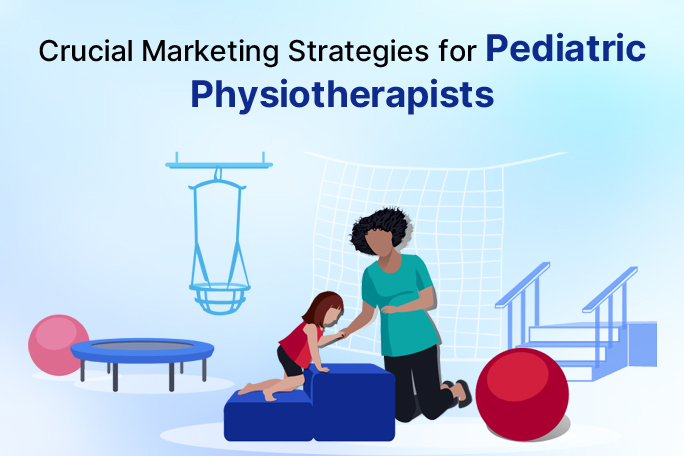

Children and toddlers spend most of their days playing. It assists them in discovering the world around them, learning how to engage with it, and acquiring vital life skills that will eventually enable them to interact with others and handle tasks independently. However, some kids struggle to develop the abilities that will let them explore […]
Children and toddlers spend most of their days playing. It assists them in discovering the world around them, learning how to engage with it, and acquiring vital life skills that will eventually enable them to interact with others and handle tasks independently. However, some kids struggle to develop the abilities that will let them explore and understand their surroundings on their own. In such cases, fine or gross motor skills, sensory processing, visual-perceptual skills, and other abilities may be affected.
It has been observed that pediatric occupational therapy can significantly improve those situations. Pediatric occupational therapy aims to promote children’s independence in all facets of life. Children can receive help from an occupational therapist in mastering daily activities like eating and dressing.
A specialist in occupational therapy assesses the child’s condition to determine whether sensory, gross, or fine motor skill deficits exist. Based on the analysis, a goal is set for the child and can only be accomplished through regular intervention sessions.
Daily life activities such as eating, using the restroom, taking a shower, maintaining a general level of personal hygiene, sleeping, and resting are all considered to be self-care activities. Although children initially rely on adults to complete these necessary tasks, they are expected to become independent in these areas as they get older and more mature.
The ability to plan and sequence tasks is a functional and practical skill that is essential to a child’s development of self-care. Additionally, it is believed that the development of self-care abilities heralds the development of other general life abilities and that delays in a child’s expansion of these abilities frequently impede their independence, integration, and participation in social situations.
Look out for these signs, and you’d know if your child needs occupational therapy or not.
#1. Your kid might have a sensory processing disorder if they shy away from particular textures or surfaces. With specific activities that are enjoyable, the pediatric occupational therapist will assist the child in overcoming this. It is incredible to watch a professional assist a child in overcoming sensory issues when, as a parent, you thought it was impossible.
#2. They may require assistance with the development of their fine motor skills if they do not use both hands simultaneously when playing or acting the part of a cook. There are several potential causes for this. However, you will see improvements with the right pediatric occupational therapist, sometimes right away. Your child’s pediatrician might also offer advice on how to tackle this at home.
#3. It’s time to discuss your options with your pediatrician if your child has trouble getting dressed or tying their own shoelaces. The ability to dress oneself can indicate that one’s fine motor skills could use some work. However, your child will eventually become proficient in each of these abilities one at a time. Try to avoid doing it for them because doing so prevents them from learning. Even though some parents struggle with this because they are in a rush, giving them the time to complete the task independently is crucial.
#4. It might be time for some OT assistance if they struggle with self-calming techniques like deep breathing or staring up at a lit ceiling fan. Children who have trouble calming down can come across as uncontrollable and impossible. However, this is a skill that can improve the quality of life for the entire family as a whole. The assistance this child receives during occupational therapy for children will benefit everyone.
#5. Another red flag that your child may require pediatric occupational therapy is avoiding eye contact. Making eye contact is not the only indicator of autism. However, it is a crucial sign you should not ignore. Therefore, it’s time to have your child evaluated by a pediatric occupational therapist if they avoid eye contact.
Children benefit from pediatric occupational therapy in several ways. If you think your child is developing more slowly than other children, ask your pediatrician for advice. Suppose it is determined after conducting the necessary evaluations that therapy would be beneficial for the child. In that case, the occupational therapist will arrange for hands-on interventions to enhance self-care abilities.
The progress of any lingering deficits in attention, executive functioning, sensory processing, or motor skills is typically another focus of therapy. Any additional support requirements, such as those for visual aids, adaptive technology, or home modifications, will be incorporated into the therapy plan.
Receive updates, business advice, and easy-to-follow tips in your inbox with just a tap.
Does your Physio therapy business needs a boost? Access the ready to implement ideas & strategies.